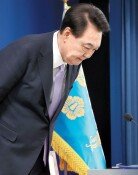1,500-year-old Roman gold coin found at ancient Chinese tomb
1,500-year-old Roman gold coin found at ancient Chinese tomb
Posted October. 29, 2013 02:42,
A Western gold coin dating back to more than 1,500 years has been found at an ancient tomb in Luoyang, Henan Province, China. The gold coin is in most complete shape among gold coins found in China, and shows a long history of exchange between the Eastern and the Western civilizations.
The gold coin from the East Roman era was found in the course of excavating a large tomb at Huangshan in Luoyang`s Jianxi district. The Xinjing newspaper said on Monday that the coin is drawing keen attention from the Chinese archeological community. Though Western coins had been discovered at ancient tombs in China, the newly discovered coin has been unearthed in its original shape, drawing extraordinary attention.
The gold coin was minted during 491518 AD, or the era of Emperor Anastasius I (?-518) of the East Roman Empire (330-1453). The coin is believed to have been used as an item to fiddle with hands rather than being circulated in China. When found, it reportedly glittered just like a brand new. Experts say that the coin illustrates that Luoyang and the West actively engaged in exchanges during the Northern Wei era.
The tomb was discovered in the process of road construction in 2012. It is within an imperial cemetery area from the Northern Wei Dynasty, and considering its size and form, the tomb is believed to be that of Emperor Jiemin. Few relics were found in this tomb due to active destroying by succeeding royal dynasties. Other than the coin, only articles of chinaware, bronze ware and stoneware were found there.
Headline News
- Pres. Yoon addresses the nation at a press conference
- LX Group chairman gifts 100 million won to employee family welcoming quadruplets
- Tax-exempt shared offices in rural areas misused as tax havens
- President-Elect Trump promises 'peace through strength'
- French gambler wins 67.2 billion won by betting on Trump’s election win







